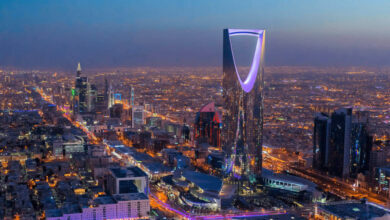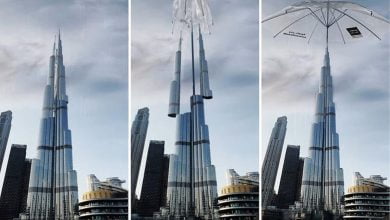The book that successfully captured the world’s attention to ancient rock art of Saudi Arabia, is named – “Prehistoric Rock Art of Northern Saudi Arabia”. Ancient rock art of Saudi Arabia is the country’s biggest heritage treasure — and affirms a history of human civilization that extends back to 10,000 years.
The periodic first copy of this ‘Prehistoric Rock Art of Northern Saudi Arabia‘ was on sale at Sharjah International Book Fair. However, there was a very nominal recognition of the Kingdom’s archaic past before Majeed Khan’s book was published in 1993.
Majeed khan, who recently got a degree from the University of Sindh, Pakistan, trekked to KSA to coalesce the Ministry of Tourism as an archaeological advisor, making suggestions on the upshot of museums and the conduct of archaeological investigations in the region. At that time, Saudi Arabia was more focused on evolving its future in the oil department.
But, the country had found Khan as a star proponent for one of its incredible ancestry glories—prehistoric art! Numerous examples of this are sprinkled across the entire terrain which authenticates to a narrative of rich cultural heritage that racks 10,000 years. Majeed Khan still lives in Riyadh, Saudi Arabia, and toils as a consultant to the Ministry of Culture’s Antiquities Department. He continues to thrive and devote his life to the country.
Success Story Of Majeed Khan Regarding Ancient Rock Art
Khan got a wonderful surprise last month when he found out that his seminal book, ‘Prehistoric Rock Art of Northern Saudi Arabia‘ which was published by the Saudi Ministry of Education’s Department of Antiquities and Museums in 1993, was now deemed a collector’s item.
A copy of the first edition was on sale for £1,250 ($1,448) by an expert London book dealer at the UAE’s Sharjah International Book Fair, which occurred from Nov 2 to Nov 13. Khan thought the selling price was hefty, but, on the other hand, he said, “It was the first research book on rock art published in any Arab country.”

When the book was published, there was hardly any focus on rock art in Saudi Arabia concerning research and subject. Moreover, there was very minute acclaim for Saudi Arabia’s history— an ancient spectacular thing that is now being adopted exuberantly as the core of prominent tourism projects, such as AlUla and Diriyah. These projects are aimed to attract millions of tourists from every corner of the world.
Majeed khan is undeniably a true champion in his field and has a deep understanding of the ancient past of the Kingdom. Until now, he has published many research papers. The first research paper was named, ‘The Lower Miocene Fauna of Assarrar, Eastern Arabia,’ published in Atlal, the Journal of Saudi Arabian Archaeology, in 1981. He co-authored this research paper.
Saudi Arabian Rock Art recognized by UNESCO World Heritage
Khan would dedicate more time and energy to petroglyphs, an academic devotion that in 2015, topped off with the rock art in the Hail region of Saudi Arabia being etched by UNESCO as a World Heritage Site. However, Khan is not coming slowly and now working on the rock art of Hima, Najran to witness these two also on the UNESCO World Heritage List.
Saudi Arabia consists of more than 2000 rock art sites with outstanding rock carvings. However, the biggest engagement of Neolithic rock art is to be found in the north of the country at two sites 300 kilometers apart in the Hail Province.
As specified by UNESCO documents, these sites explain their notation on the World Heritage List as they feature a considerable digit of petroglyphs of outstanding quality to ascribe to between 6,000 and 9,000 years of human record. The final 3,000 years represented the very initial development of a script that mirrors the bedouin culture, finishing off with Qur’anic verses.
The first Hail site is at Jabal Umm Sinman. And, another twin Hail site is at Jabal Al-Manjor and Raat. These are among the four richest rock art regions in Saudi Arabia.
According to UNESCO, it was on these hills that the ancestors of Saudis left ancient Arabian inscriptions that reflect their existence, their religion, social, cultural, and philosophical standpoints of their sentiments about life and death, and esoteric and cosmological ideologies.
“The rock art of Jubbah embodied all stages of human presence from the Neolithic, 10,000 years before the present, until the contemporary past, and contemplated a time when the environment and landscape were very diverse from today,” said Khan.

The rocks contain trappings of the lost human and animal figures, which consist of long-forgotten gods, dancers, and animals including sheep, ibex, camels, horses, wolves, ostriches, and lions.
“The variety of animals (displayed) indicated differences in climate and atmosphere,” said Khan. “Large ox sculptures demonstrated a cool and moist climate, while the scarcity of ox figures and the arrival of camel petroglyphs depicted superheated and dry conditions.”
He further said, “Both at Jubbah and Shuwaymis this transition in environment and animals depicted the gradual but severe change in the society and atmosphere in prehistoric and pre-Islamic Arabia. Likenesses in compositions and depictions in other parts of the earth, including Africa, India, Australia, Europe, and America, revealed that “Saudi Arabia was a part of world genealogy and cultural rituals.”
Aramco World
In 2002, the magazine of the Saudi national oil company called Aramco world briefed that last year in March, a bedouin scuffing his camels had bumbled on odd imprints on a secluded clump of rocks. He mentioned that to a teacher from the regional town of Shuwaymis. He quickly gave notice to the authorities and they called in Khan.
“Yes, the story is accurate,” Khan said. He had a meeting with the bedouin and Mr. Saad Rawsan, the director of archaeology in the Hail region, who took them to the sites for additional analyses and research.
What’s next?
Peter Harrington, the London specialist book dealer that kept Khan’s book on sale for Sharjah Book Fair, characterized it as a pioneering monograph—the foremost and deluxe edition of this seminal work, which addresses a hitherto neglected subject.
Although many parts of the world have heritage sites, none is like Saudi Arabia. Majeed Khan undoubtedly played a huge role in developing rock art through his outstanding work and dedication.
“The ministry is printing it again,” Khan said.
What can be better than this? You can grab yours and enjoy it with your usual tea or cake. Also, if you’re a history lover, you’d love to visit one of the ancient places in Saudi Arabia, and trust us you won’t regret it!









